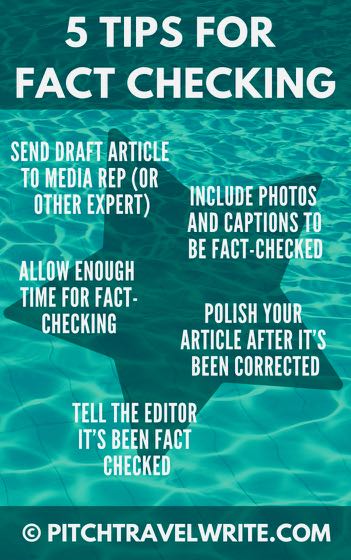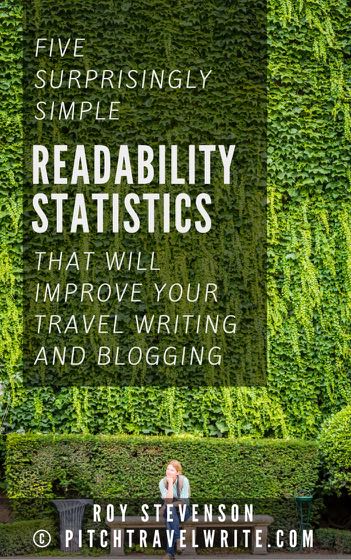- Home
- Travel Writing Craft Resources
- Fact Checking Your Travel Stories
Successful Fact Checking:
The Key to Accurate Travel Stories
By Roy Stevenson
Fact checking seems like a dull topic meant for historians, documentarians or newspaper journalists. But what if I told you it’s one of the most important tasks for freelance travel writers?
What is successful fact checking? Fact checking ensures the names, statistics, numbers, and any other facts in your article are correct and up-to-date. This means things like population, number of tourists per year, height of the tallest mountain and all the "facts" you present as part of your travel story.
Your readers and editors take for granted that your facts are correct – until they aren’t. And having just one incorrect fact in your article will destroy your credibility.
Fact Checking Your Articles
Many of my travel stories are about historic places where momentous events took place. When I’m doing my research and writing the article, I always double-check the dates and events. But that’s only the beginning.
When I write about museums, I send a draft copy of my story to the museum curator or PR director for fact checking. It’s worth it to have an expert set of eyes look over my article for errors and omissions. They review it for accuracy and they even might point out any typos.
I recently wrote a piece about an automobile museum for a classic car magazine. When I wrote the article I thought I had my facts in order and checked them against all of my references and notes. Then I sent it off to the museum curator for fact checking.
Much to my surprise, the museum curator found numerous errors. My photo captions were the primary culprit, but photo captions have an impact on your articles. I corrected my article to match the corrected photo captions. After this was complete I sent it all to the editor.
The important point here is that the accuracy of your photo captions is important. Always send those off to the expert to fact check before you send them to the editor.
I was so thankful I had taken this one final step to fact check my article and photo captions. Imagine my embarrassment if it had been published! The editor probably wouldn’t have worked with me again.
Always Consult the Experts
Always have your facts checked before you submit your articles to magazine editors. For travel writers, send the first draft of your story to the media contact at the destination you’re writing about. Ask the media rep to fact check your article. After you receive the corrections, polish the piece and then submit it to the editor.
Media reps are happy to fact check your travel story and typically return it promptly with corrections. They’re glad to do this because they get a sneak preview of your article. And, they don’t want stories published with incorrect facts about their destination.
Invariably, I get some facts wrong. I'm not the expert. I leave this to the media reps to update or correct them. If I might have missed an important point, they’ll let you know about this, too.
Do yourself a big favor and don’t skip this important step of fact checking.
Right or Wrong - Responding to Errors
One sure way to make sure an editor stops commissioning articles from you is when you're sloppy with the facts. It destroys your credibility and harms the magazine's credibility as well.
Once or twice I’ve had an article published where a subscriber has challenged one of my facts. Editors hate receiving these emails because they feel like fools – and they'll send the complaints to you to respond to the reader.
When your facts are correct and the reader is wrong you can breathe a sigh of relief. Just re-check that fact, quote your source and send your response back to the editor.
And, of course, if you made an error own up to it, cite the correct fact – and learn from the experience. When you have an expert fact check your work you'll avoid this uncomfortable situation.
The Editor Wants to Know
Successful fact checking is not exciting. I rate it down there with translating ancient papyrus scrolls into Latin. But if you want to maintain credibility with your editors, you must do it. It only takes a short time. Plan your schedule to allow for fact checking so you can still meet your deadline.
Editors need to trust your content. If you provide quality content they can trust, they’re likely to commission more articles from you.
One final tip: When you submit your finished article to the magazine make sure you mention that it’s been fact checked by the museum staff (or other expert on the subject.) It saves the editor time and stress – and the editor will appreciate knowing this step has been done!
Related articles that will interest you:

Roy Stevenson is a professional travel writer and the author of www.PitchTravelWrite.com. Over the past ten years, he’s had more than 1000 articles published in 200 magazines, trade and specialty journals, in-flights, on-boards, blogs and websites and has traveled on assignment around the U.S. and to dozens of international destinations.
IF YOU ENJOYED THIS POST, GET UPDATES. IT'S FREE.

















